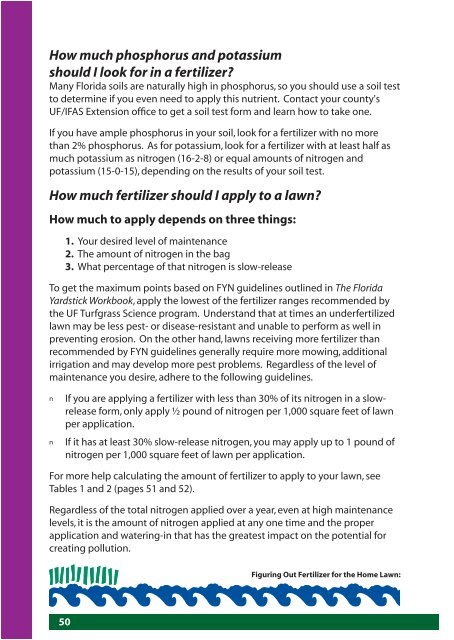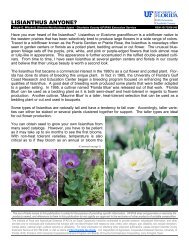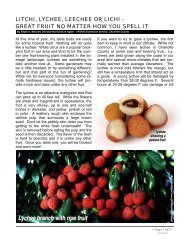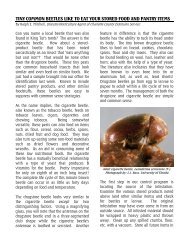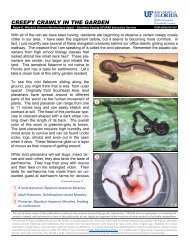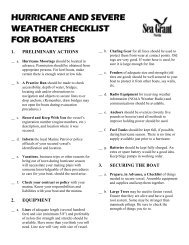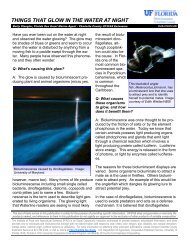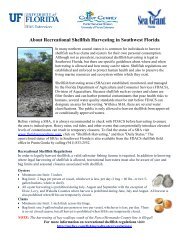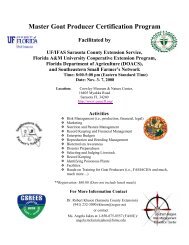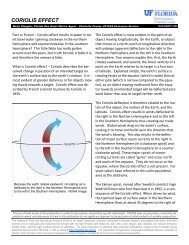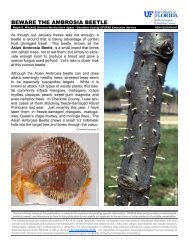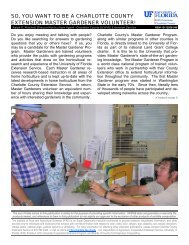A Guide to Florida-Friendly Landscaping - Charlotte County ...
A Guide to Florida-Friendly Landscaping - Charlotte County ...
A Guide to Florida-Friendly Landscaping - Charlotte County ...
You also want an ePaper? Increase the reach of your titles
YUMPU automatically turns print PDFs into web optimized ePapers that Google loves.
How much phosphorus and potassiumshould I look for in a fertilizer?Many <strong>Florida</strong> soils are naturally high in phosphorus, so you should use a soil test<strong>to</strong> determine if you even need <strong>to</strong> apply this nutrient. Contact your county'sUF/IFAS Extension office <strong>to</strong> get a soil test form and learn how <strong>to</strong> take one.If you have ample phosphorus in your soil, look for a fertilizer with no morethan 2% phosphorus. As for potassium, look for a fertilizer with at least half asmuch potassium as nitrogen (16-2-8) or equal amounts of nitrogen andpotassium (15-0-15), depending on the results of your soil test.How much fertilizer should I apply <strong>to</strong> a lawn?How much <strong>to</strong> apply depends on three things:1. Your desired level of maintenance2. The amount of nitrogen in the bag3. What percentage of that nitrogen is slow-releaseTo get the maximum points based on FYN guidelines outlined in The <strong>Florida</strong>Yardstick Workbook, apply the lowest of the fertilizer ranges recommended bythe UF Turfgrass Science program. Understand that at times an underfertilizedlawn may be less pest- or disease-resistant and unable <strong>to</strong> perform as well inpreventing erosion. On the other hand, lawns receiving more fertilizer thanrecommended by FYN guidelines generally require more mowing, additionalirrigation and may develop more pest problems. Regardless of the level ofmaintenance you desire, adhere <strong>to</strong> the following guidelines.nnIf you are applying a fertilizer with less than 30% of its nitrogen in a slowreleaseform, only apply ½ pound of nitrogen per 1,000 square feet of lawnper application.If it has at least 30% slow-release nitrogen, you may apply up <strong>to</strong> 1 pound ofnitrogen per 1,000 square feet of lawn per application.For more help calculating the amount of fertilizer <strong>to</strong> apply <strong>to</strong> your lawn, seeTables 1 and 2 (pages 51 and 52).Regardless of the <strong>to</strong>tal nitrogen applied over a year, even at high maintenancelevels, it is the amount of nitrogen applied at any one time and the properapplication and watering-in that has the greatest impact on the potential forcreating pollution.Figuring Out Fertilizer for the Home Lawn:50


